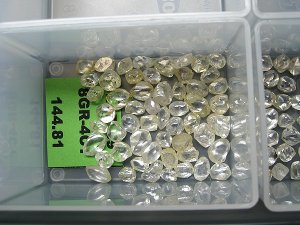- Joined
- May 3, 2001
- Messages
- 7,516
denverappraiser|1359907536|3371124 said:There’s another dynamic that has happened as well. Mass market jewelers in the US have long marketed things as ‘approximately ¾ carat’ and the like. This is legalese to accommodate the fact that if you make 1000 superficially identical rings, there will actually be differences if you really look at the details. That's fair and reasonable. It’s a matter of negotiation what is a reasonable margin and exactly what standards for ‘approximately’ are acceptable. This is why the threshold appeared at 0.70 rather than, say, 0.72 or 0.75. ‘Approximately 3/4 cts’ does not mean the same thing as ‘at least 0.75cts’ but consumers tend to see them as the same.
Yes, Denver Appraiser is correct. If you read the small print on a department store ring or a Costco ring with a "1ct" diamond in it it will say something along the lines of actual weight will vary between 0.90cts and 1.10cts. Given the pricing on the rings, care to make any wagers on how many are over 0.99cts?
Just one more reason for caveat emptor!
Wink




300x240.png)